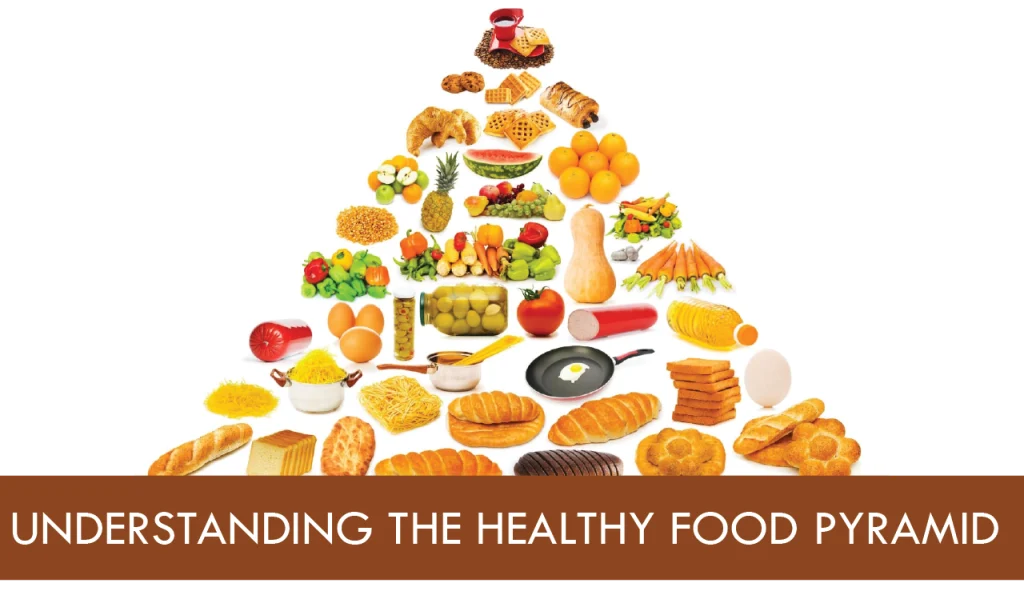Table of Contents
Introduction
The journey of nutrition guidance has been a fascinating one, marked by evolving insights and shifting paradigms. At the heart of this journey lies the food guide pyramid, a visual representation that has profoundly influenced our understanding of healthy eating. This pyramid, initially introduced by the United States Department of Agriculture (USDA), was not just a tool; it was a revolution in how we view our plates.
Originally, the food pyramid was introduced as a simple, straightforward guide to help the average American make healthier food choices. Its layered structure visually represented the recommended servings from each of the basic food groups. As a guide, it aimed to encapsulate the essence of a balanced diet in an easily understandable format. It was a response to the growing concerns about the health of the nation and a step towards more informed dietary decisions.
However, the impact of the food pyramid went beyond just a dietary tool. It reflected and, in turn, shaped the nation’s understanding of nutrition. It was a symbolic representation of the relationship between different food groups and their place in a healthy diet. The pyramid’s emphasis on fruits, vegetables, and whole grains, along with moderate amounts of proteins and dairy products, was a clear directive towards a more plant-based, low-fat diet.
The USDA’s role in developing these guidelines was crucial. As an authoritative body, the USDA’s endorsement of the pyramid gave it a legitimacy that was essential for public acceptance. The department’s collaboration with various health professionals and nutritionists ensured that the guidelines were grounded in scientific research and public health data. This collaboration was vital in addressing the complex relationship between diet and health, providing a foundation for educating the public about nutrition.
As we delve deeper into the evolution and significance of the food pyramid, we uncover not just a guide to healthy eating but a reflection of our journey towards understanding nutrition better. This pyramid was not static; it evolved over time, adapting to new scientific findings and changing health needs. From the original food pyramid introduced in 1992 to the more recent iterations like MyPlate, each version has contributed to our growing knowledge about what it means to eat healthily.
In this comprehensive guide, we will explore the layers of the healthy eating pyramid, unraveling the wisdom behind each level and understanding how it applies to our daily lives. From its humble beginnings to its current status as a cornerstone of nutritional education, the journey of the food pyramid is a testament to our continual quest for a healthier, more balanced life.
The Evolution of the Food Pyramid: From USDA to MyPlate
The Original USDA Food Pyramid (1992 Pyramid)

In 1992, the United States Department of Agriculture (USDA) unveiled a groundbreaking tool in the realm of nutritional education – the original food pyramid. This pyramid, with its distinct layers, was more than a mere diagram; it was a visual encapsulation of the dietary guidelines of the time. Each layer represented a different food group, with the size of the layer suggesting the proportion of that group in a healthy diet. The base of the pyramid emphasized fruits and vegetables and complex carbohydrates, advocating for their substantial presence in our daily intake. As one moved up the pyramid, the suggested quantities of dairy products, proteins (like poultry and fish), and finally fats and oils decreased, promoting a balanced approach to healthy eating.
This pyramid was a response to the increasing concerns about lifestyle-related health issues in the United States. It was a tool designed not just for nutritionists and health professionals, but for the general public. It aimed to simplify the complex world of nutritional science into an easily digestible format, thereby influencing the food choices of millions. The impact of the 1992 pyramid was significant; it shaped the national discourse on diet and health and played a key role in educating generations about the importance of balanced nutrition.
Transition to MyPlate (New Pyramid)
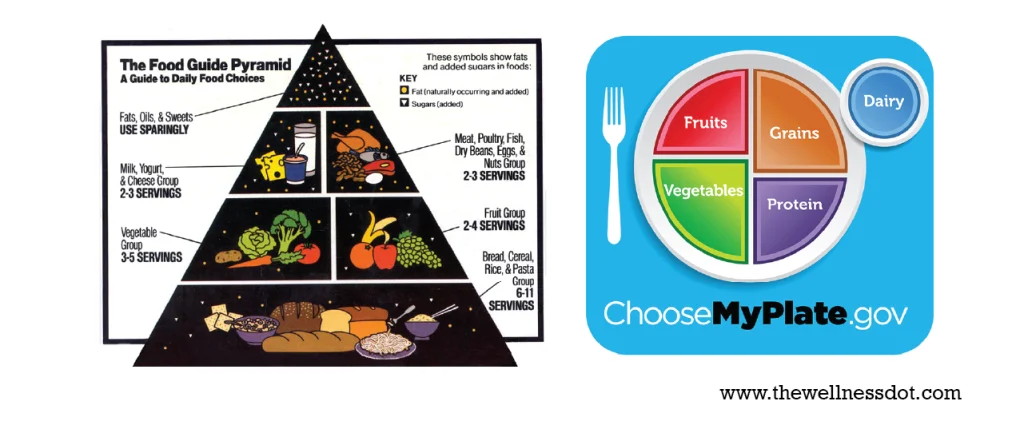
However, as time passed and scientific understanding evolved, the need for a more updated nutritional guide became evident. In 2011, the USDA rolled out MyPlate, a revised version of the food pyramid. This new pyramid was not a pyramid at all, but rather a plate, divided into sections that represented the major food groups. MyPlate was a response to the criticisms of the original pyramid and a step towards a more intuitive representation of healthy eating.
The shift from a pyramid to a plate was more than just a design change; it was a conceptual evolution. MyPlate aimed to reflect a more balanced approach to meals rather than just individual food groups. It emphasized the importance of portion control and the integration of different food groups into each meal. This nutrition guide was also a nod to the changing patterns of eating; it recognized that food consumption was not just about what we eat, but also about how we compose our meals.
One of the most critical aspects of MyPlate was its simplicity. The clear, plate-based design made it easier for people to visualize and implement the guidelines in their daily lives. By dividing the plate into sections for vegetables, fruits, grains, proteins, and a side serving of dairy, MyPlate communicated its message succinctly: fill half your plate with fruits and vegetables, a quarter with grains (preferably whole grains), and a quarter with protein.
The transition from the USDA food pyramid to MyPlate marked a significant moment in the history of dietary guidelines in the United States. It reflected the ongoing evolution of nutritional science and the continuous effort of health authorities to provide the public with an accessible and practical guide to healthy eating.
Components of the Healthy Eating Pyramid
Fruits and Vegetables: The Foundation for Healthy Eating

At the very foundation of the Healthy Eating Pyramid are fruits and vegetables, signifying their paramount importance in a healthy diet. These natural powerhouses are not just sources of essential vitamins and minerals; they are the cornerstone of a balanced nutritional approach. Consuming a variety of fruits and vegetables is key to getting a wide range of nutrients, including many vitamins, minerals, and antioxidants that are essential to health. Their role in reducing the risk of chronic diseases such as heart disease, hypertension, and certain cancers is well-documented. The pyramid underscores the need to fill a significant portion of our plates with these colorful and nutritious food items, championing them as the primary choice for snacking and mealtime.
Whole Grains and Proteins: Building Blocks of Nutrition

Moving up the pyramid, we encounter whole grains and healthy proteins, vital components that act as the building blocks of nutrition. Whole grains, such as brown rice, whole wheat, and oats, are essential for their high fiber content and their role in maintaining a healthy digestive system. They are also crucial in providing sustained energy and helping in the management of weight and blood sugar levels.
Proteins, including lean meats like poultry, fish, beans, and legumes, are equally vital. They are essential for the growth and repair of tissues, and for maintaining muscle mass. The Healthy Eating Pyramid encourages the inclusion of a variety of protein sources in the diet, highlighting the importance of lean proteins and plant-based options. This diversity not only ensures a broad spectrum of nutrients but also adds different flavors and textures to meals, making healthy eating both enjoyable and nutritious.
Dairy and Healthy Fats: Balancing Your Diet
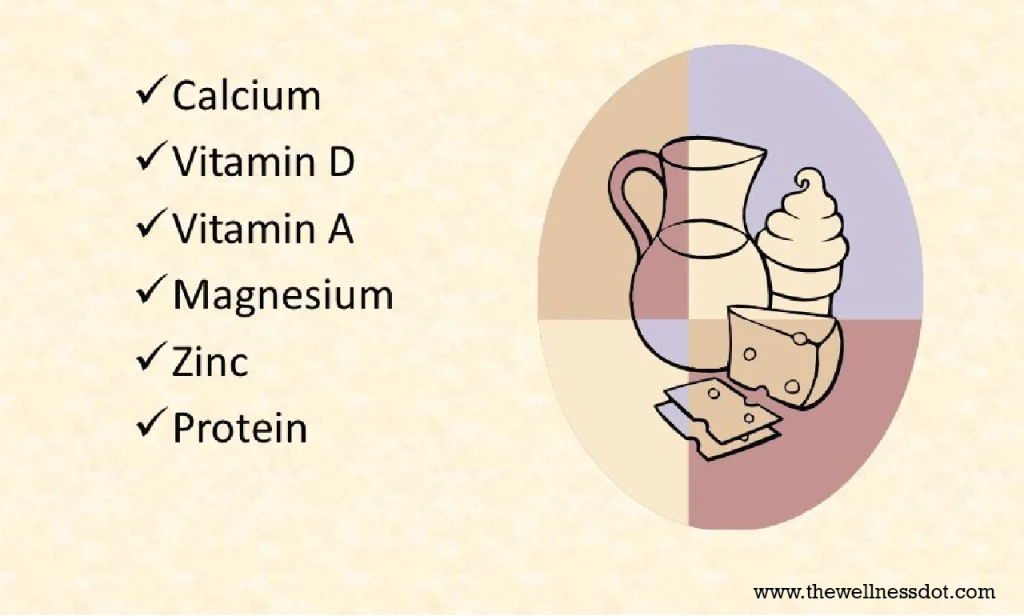
Near the top of the pyramid, we find dairy products and healthy fats. Dairy products, such as milk, cheese, and yogurt, are important for their calcium content, essential for strong bones and teeth. The pyramid guides towards low-fat or fat-free options to maximize benefits and minimize the intake of saturated fats.
Healthy fats, like those found in vegetable oils, nuts, and seeds, are integral to a well-rounded diet. Contrary to the myth that all fats are bad, the pyramid highlights the need for healthy fats in moderation. These fats are crucial for brain health, absorption of fat-soluble vitamins, and overall heart health. The inclusion of healthy fats in the pyramid reflects a modern understanding of their role in a nutritious diet, emphasizing that it’s not just the quantity of fat that matters, but the quality as well.
Application in Daily Life
Reading and Interpreting Food Labels

One of the most practical skills in applying the principles of the Healthy Eating Pyramid is the ability to read and interpret food labels. Understanding these labels is crucial in making informed, healthy food choices that align with the food guide recommendations. Food labels provide essential information about the nutritional content of food items, including details on calories, fat content, sugars, proteins, and vitamins. They also list ingredients, helping consumers identify the presence of whole grains, added sugars, and unhealthy fats.
Learning to interpret this information enables individuals to compare products and choose those that best fit into the healthy eating guidelines. It’s about looking beyond marketing claims and understanding the true nutritional value of foods. This skill is particularly important in a world where processed and packaged foods are common. By focusing on items rich in fruits and vegetables, whole grains, and lean proteins, and being mindful of portion sizes, people can significantly improve their diet quality.
Meal Planning and the Food Pyramid
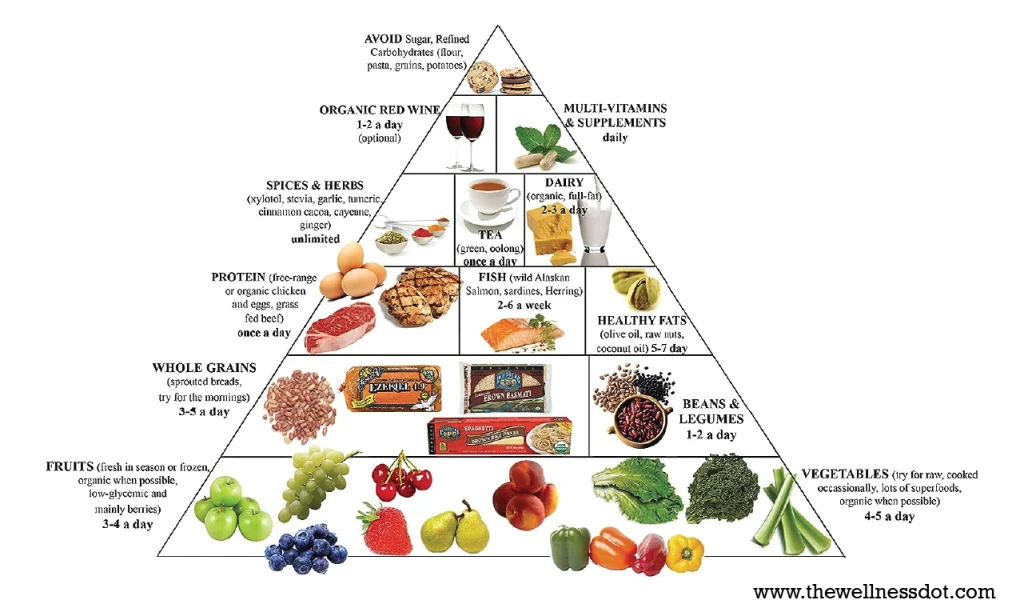
Another key aspect of applying the food pyramid to daily life is meal planning. This involves consciously incorporating the major food groups and recommended servings from the pyramid into daily meals. A balanced meal plan includes a variety of foods from each group, ensuring a range of essential nutrients. For example, breakfast could include whole grain cereals with low-fat dairy and a serving of fruit, while lunch and dinner could focus on vegetables, lean proteins, and a smaller portion of whole grains.
Effective meal planning also involves being mindful of portion sizes, as recommended by the pyramid. This ensures that one gets the right balance of nutrients without overeating. Planning meals around the food pyramid can also help in grocery shopping, making it easier to buy the right types of foods and avoid those that don’t fit well within the pyramid.
Incorporating the guidelines of the Healthy Eating Pyramid into everyday life doesn’t just mean eating the right things; it’s about creating a sustainable, enjoyable approach to eating. It encourages a shift from a diet-centric perspective to a holistic lifestyle choice, where food is both a source of nourishment and pleasure. By embracing the principles of the pyramid in meal planning and food label reading, individuals can take significant steps towards a healthier, more balanced diet.
Challenges and Misconceptions
Common Misconceptions about the Food Pyramid
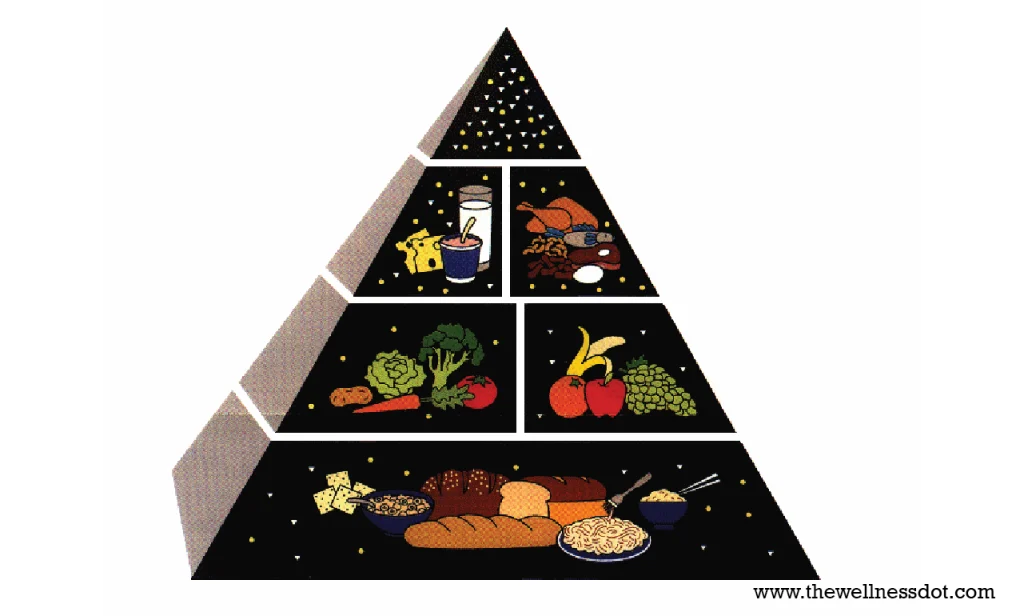
The food pyramid, while a valuable guide, has not been immune to misconceptions and myths. One common misunderstanding revolves around the role of complex carbohydrates in the diet. The pyramid emphasizes whole grains and complex carbohydrates as a significant part of a balanced diet, but this has often been misinterpreted as an endorsement of excessive carbohydrate consumption. In reality, the pyramid suggests a moderate, balanced intake of carbohydrates, primarily from whole grain sources, which are essential for energy and overall health.
Another prevalent myth is the complete demonization of junk food. While the pyramid certainly encourages minimal consumption of high-fat and high-sugar foods, it does not imply that these foods must be entirely eliminated. The key is moderation and understanding that these foods should be consumed sparingly, complementing rather than dominating a diet that is rich in fruits, vegetables, and whole grains.
Overcoming Barriers to Healthy Eating

Adhering to the principles of the Healthy Eating Pyramid can sometimes be challenging, especially when faced with barriers like intolerance to dairy products or limited access to fresh produce. For those with dairy intolerance, the pyramid’s recommendation for dairy can be fulfilled with alternative sources like soy or almond milk, which offer similar nutritional benefits. The idea is to ensure adequate calcium and vitamin D intake, whether through traditional dairy products or suitable substitutes.
Another challenge is incorporating a variety of fruits and vegetables into the diet, particularly in areas where these foods are not easily accessible or affordable. In such cases, frozen or canned options can be a viable alternative, as they often retain most of the nutritional value of fresh produce. The key is to choose options with low added sugars or sodium.
Practical advice for adhering to the pyramid’s guidelines includes planning meals ahead, cooking at home more often, and making gradual changes rather than drastic alterations to the diet. Such strategies help in integrating the principles of the food pyramid into daily life, making healthy eating a more achievable and sustainable goal.
Key Takeaways
The journey through the Healthy Eating Pyramid reveals its profound impact on how we view and approach our diet. This guide has been instrumental in shaping our understanding of what constitutes a healthy diet. The pyramid serves as a visual blueprint, offering a clear and structured approach to eating that emphasizes balance, variety, and moderation.
- Balance and Variety: One of the critical takeaways from the food pyramid is the importance of a balanced diet that includes a variety of foods. This diversity ensures that we receive a broad range of nutrients essential for our health. By incorporating different food groups, such as fruits and vegetables, whole grains, lean proteins, and healthy fats, we cater to the body’s diverse nutritional needs.
- Moderation and Portion Control: The pyramid also teaches us about moderation and portion control. It encourages us to consume certain foods in larger quantities, like fruits and vegetables, while recommending others, such as fats and sweets, be eaten sparingly. Understanding serving sizes and their representation in the pyramid helps maintain a balanced diet without overindulgence or deprivation.
- Adaptability and Personalization: Another significant aspect of the pyramid is its adaptability to different dietary needs and preferences. Whether accommodating a lactose intolerance or preferring a vegetarian diet, the pyramid’s guidelines can be tailored to meet individual requirements, making healthy eating accessible and achievable for everyone.
- Educational Value: The educational impact of the food pyramid cannot be overstated. It has been a fundamental tool in teaching generations about the basics of nutrition, serving as a starting point for more in-depth discussions about health and diet.
In summary, the Healthy Eating Pyramid stands as a cornerstone in nutritional education, guiding us in making informed food choices and developing healthy eating habits. Its emphasis on balance, variety, and moderation in diet, coupled with its adaptability to individual needs, makes it an enduring and valuable tool in the pursuit of a healthy lifestyle.
FAQ
Q: What is the Healthy Eating Pyramid?
A: The Healthy Eating Pyramid is a visual guide that illustrates the ideal balance and variety of food groups in a healthy diet. It emphasizes the consumption of fruits and vegetables, whole grains, and lean proteins, while recommending limited intake of fats, sweets, and processed foods.
Q: How does the Healthy Eating Pyramid differ from the original USDA Food Pyramid?
A: The original USDA Food Pyramid, introduced in 1992, provided a basic structure for what to eat, but the Healthy Eating Pyramid offers a more updated and nuanced approach. It places a stronger emphasis on plant-based foods and whole grains and suggests healthy fats and protein sources, reflecting the latest nutritional research.
Q: Why is it important to follow dietary guidelines like the food pyramid?
A: Following dietary guidelines like the Healthy Eating Pyramid helps ensure that we get a balanced mix of nutrients essential for good health. These guidelines are designed to reduce the risk of chronic diseases such as heart disease, diabetes, and obesity, and to promote overall health and well-being.
Q: Can the Healthy Eating Pyramid accommodate different dietary needs and preferences?
A: Yes, the Healthy Eating Pyramid is adaptable to various dietary needs and preferences, including vegetarian, vegan, gluten-free, or lactose-free diets. It’s a flexible guide that can be customized according to individual nutritional requirements and lifestyle choices.
Q: How can I apply the principles of the Healthy Eating Pyramid to my daily meals?
A: You can apply these principles by including a variety of food groups in your meals, focusing on whole grains, fruits, and vegetables, and adding moderate amounts of lean proteins and dairy. It’s also important to be mindful of portion sizes and to limit the intake of processed foods and high-fat, high-sugar items.
Q: Is it possible to eat healthy on a budget while following the Healthy Eating Pyramid guidelines?
A: Absolutely. Eating healthy on a budget is achievable by planning meals in advance, buying in-season fruits and vegetables, choosing whole grains in bulk, and opting for more affordable protein sources like beans and legumes.
Conclusion
As we conclude our exploration of the Healthy Eating Pyramid, it’s clear that this guide is more than just a dietary tool; it’s a blueprint for a healthier, more balanced life. The significance of the food guide pyramid in promoting a balanced diet and its role in preventing health risks, including coronary heart disease, cannot be overstated. By emphasizing a diet rich in fruits and vegetables, whole grains, and lean proteins, while limiting processed foods, unhealthy fats, and sugars, the pyramid lays the groundwork for a nutritious lifestyle.
The pyramid’s approach to eating is not just about reducing the risk of chronic diseases; it’s also about enhancing overall well-being and quality of life. A balanced diet as outlined in the pyramid contributes to better energy levels, improved mental health, and a stronger immune system. Moreover, by advocating for portion control and variety, the pyramid helps individuals enjoy a wide range of foods without the guilt or health risks associated with overeating or nutrient deficiencies.
Importantly, the Healthy Eating Pyramid also acknowledges that there is no one-size-fits-all solution to nutrition. It provides a flexible framework that can be adapted to fit individual dietary needs, preferences, and lifestyles, making healthy eating an achievable goal for everyone. Whether you are a busy professional, a student, or someone managing specific health conditions, the principles of the pyramid can be tailored to meet your unique nutritional requirements.
In essence, the Healthy Eating Pyramid transcends being a mere dietary guideline; it embodies a holistic approach to eating and living healthily. It’s a reminder that our food choices have profound implications not just for our physical health, but for our overall well-being. As we continue to navigate the complexities of nutrition and health, the pyramid stands as a beacon, guiding us towards more informed, mindful, and healthful eating habits.
References and Further Reading
To deepen your understanding of the Healthy Eating Pyramid and related nutritional concepts, the following resources are invaluable. They offer a wealth of information from reputable sources, including the Harvard School of Public Health and the United States Department of Agriculture (USDA):
- Harvard School of Public Health: Visit their Nutrition Source website for comprehensive information on the Healthy Eating Pyramid, including detailed explanations of each food group and practical tips for healthy eating.
- USDA’s ChooseMyPlate: This is the official site for the USDA’s current dietary guide, MyPlate. It provides resources, tools, and guidelines to help individuals make better food choices aligned with the Healthy Eating Pyramid principles.
- Dietary Guidelines for Americans: Published by the USDA and the Department of Health and Human Services, this document provides advice on dietary habits that promote health and reduce the risk of major chronic diseases.
- Journal of Nutrition and Metabolism: For those interested in more scientific, in-depth studies, this journal offers peer-reviewed articles on diet and its impact on human health.
- “Eat, Drink, and Be Healthy: The Harvard Medical School Guide to Healthy Eating” by Walter C. Willett: This book, authored by one of the developers of the Healthy Eating Pyramid, provides a clear, evidence-based examination of dietary choices and their health impacts.
- American Heart Association: Their website offers resources and guidelines for a heart-healthy diet, closely aligning with the principles of the Healthy Eating Pyramid.
- Nutrition.gov: Managed by the USDA, this website is a valuable resource for a wide array of nutrition information, including healthy eating tips, dietary supplements, and food assistance programs.
- “In Defense of Food: An Eater’s Manifesto” by Michael Pollan: While not directly related to the Healthy Eating Pyramid, this book offers insightful perspectives on modern eating habits and how to make healthier food choices.
- World Health Organization (WHO) – Nutrition: The WHO provides global guidelines and research on nutrition, offering a broader perspective on dietary patterns and health.
By exploring these resources, you can gain a more comprehensive understanding of the Healthy Eating Pyramid and its application in everyday life, empowering you to make more informed decisions about your diet and overall health.
